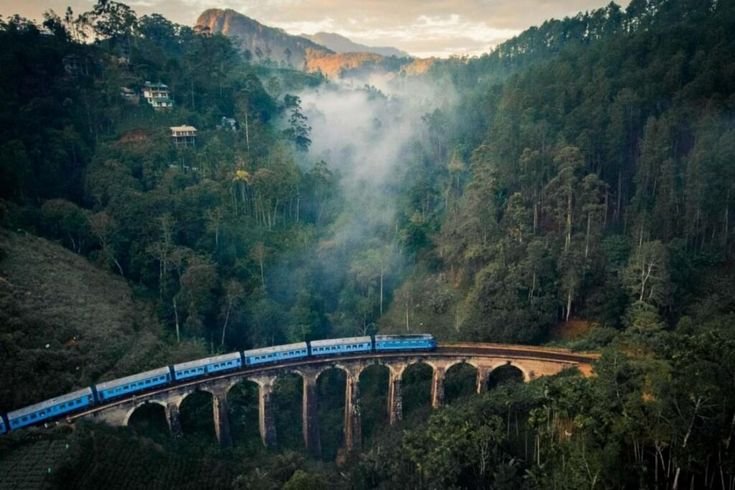Nestled in the heart of Sri Lanka, Anuradhapura stands as a timeless testament to the island’s rich historical and spiritual heritage.
Nestled in the heart of Sri Lanka, Anuradhapura stands as a timeless testament to the island’s rich historical and spiritual heritage. Known for its serene landscapes and ancient ruins, this sacred city attracts travelers who are curious about both history and culture. Anuradhapura was once the capital of a thriving kingdom, where kings ruled, monumental stupas rose, and religious devotion flourished. Today, it serves as a bridge between the past and present, offering visitors a glimpse into the extraordinary architectural achievements, cultural richness, and spiritual practices of ancient Sri Lanka. Walking through its sacred grounds, one can sense the deep-rooted faith that shaped the lives of its inhabitants for centuries.
The Historical Significance of Anuradhapura
Anuradhapura is one of the oldest continuously inhabited cities in the world, with a history that dates back over 2,000 years. It became the capital of Sri Lanka around the 4th century BCE and remained a major center for politics, religion, and culture for more than a millennium. The city is renowned for its massive stupas, intricate monasteries, and royal palaces. Ancient irrigation systems, which still function today, reveal the advanced engineering knowledge possessed by its citizens.
Archaeologists have found that Anuradhapura was not just a political center but also a hub for Buddhist teachings and spiritual growth. The sacred Bodhi Tree, said to be grown from a branch of the original tree under which Buddha attained enlightenment, remains a powerful symbol of faith. Visitors and pilgrims alike come to pay homage and witness the ancient practices that have survived the test of time.
Sri Lanka Attractions: A Journey Through Anuradhapura
For travelers seeking authentic historical experiences, Anuradhapura ranks among the most captivating Sri Lanka attractions. Some must-visit landmarks include:
- Ruwanwelisaya Stupa – A colossal white stupa considered one of the world’s largest, built by King Dutugemunu in the 2nd century BCE.
- Thuparamaya – Believed to enshrine the right collarbone of Buddha, this stupa is a testament to early Buddhist architecture.
- Jetavanaramaya – One of the tallest brick structures of the ancient world, reflecting the ingenuity of ancient engineers.
- Isurumuniya Temple – Famous for its exquisite stone carvings, including the iconic “Lovers’ Rock.”
Beyond these monuments, the vast parks and serene lakes surrounding the city provide a peaceful retreat, making it an ideal spot for history enthusiasts, photographers, and spiritual seekers.
Spiritual and Cultural Insights
Anuradhapura is more than just a collection of monuments; it represents a civilization built on faith, discipline, and knowledge. Daily rituals and annual festivals, such as Poson Poya, attract thousands of pilgrims who follow traditions that have been maintained for centuries. The city reflects a seamless integration of culture and religion, where art, architecture, and devotion coexist harmoniously.
Visitors can observe monks practicing meditation, traditional crafts, and rituals that provide insight into ancient Buddhist teachings. The city’s layout, with monasteries, stupas, and palaces systematically arranged, demonstrates the meticulous planning and spiritual significance placed on every aspect of life.
Sri Lanka Tours: Experiencing Anuradhapura First-Hand
Travelers exploring Sri Lanka often include Anuradhapura in their Sri Lanka tours due to its historical and spiritual importance. Guided tours provide context about the city’s rulers, religious significance, and architectural marvels. Tourists can explore both the sacred and secular sites while learning about the evolution of Sri Lankan civilization over centuries.
Tour itineraries typically include visits to ancient reservoirs such as Tissa Wewa and Nuwara Wewa, which exemplify sustainable engineering practices. Tour guides often share stories of kings, monks, and legendary events that enrich the visitor’s experience. Traveling through Anuradhapura allows tourists to connect with history in a tangible way, making it an unforgettable journey through time.
Modern Preservation and Research
Today, Anuradhapura is not only a tourist destination but also a hub for archaeological research. Conservation efforts by the Sri Lankan government and UNESCO aim to preserve this UNESCO World Heritage site. Excavations, restorations, and educational programs ensure that the ancient city continues to inspire future generations.
These efforts have also introduced innovative ways for tourists to engage with history. Digital guides, interactive displays, and carefully curated walking paths allow visitors to explore without damaging the delicate ruins. Such initiatives maintain the balance between tourism and preservation, ensuring that Anuradhapura’s cultural legacy endures.
Conclusion
Anuradhapura is more than an ancient city; it is a living chronicle of faith, ingenuity, and devotion. Its magnificent stupas, sacred temples, and serene landscapes offer a unique blend of history and spirituality, making it a must-visit destination in Sri Lanka. By exploring Anuradhapura through structured tours and personal journeys, visitors gain insight into the island’s profound cultural heritage. From architectural marvels to spiritual practices, this ancient kingdom continues to captivate and educate those who seek to understand the heart of Sri Lanka.
FAQ
1. What is the best time to visit Anuradhapura?
The ideal time is from December to April when the weather is dry and suitable for sightseeing.
2. How long should I spend in Anuradhapura?
A 1–2 day visit is sufficient to explore the major attractions comfortably.
3. Is Anuradhapura suitable for family tours?
Yes, the city offers both educational and recreational experiences suitable for all age groups.
4. Are there guided tours available in Anuradhapura?
Yes, many local and travel companies offer guided tours with historical insights.
5. Can I combine Anuradhapura with other Sri Lanka attractions?
Absolutely. It is often included in cultural circuits along with Polonnaruwa, Sigiriya, and Kandy.
